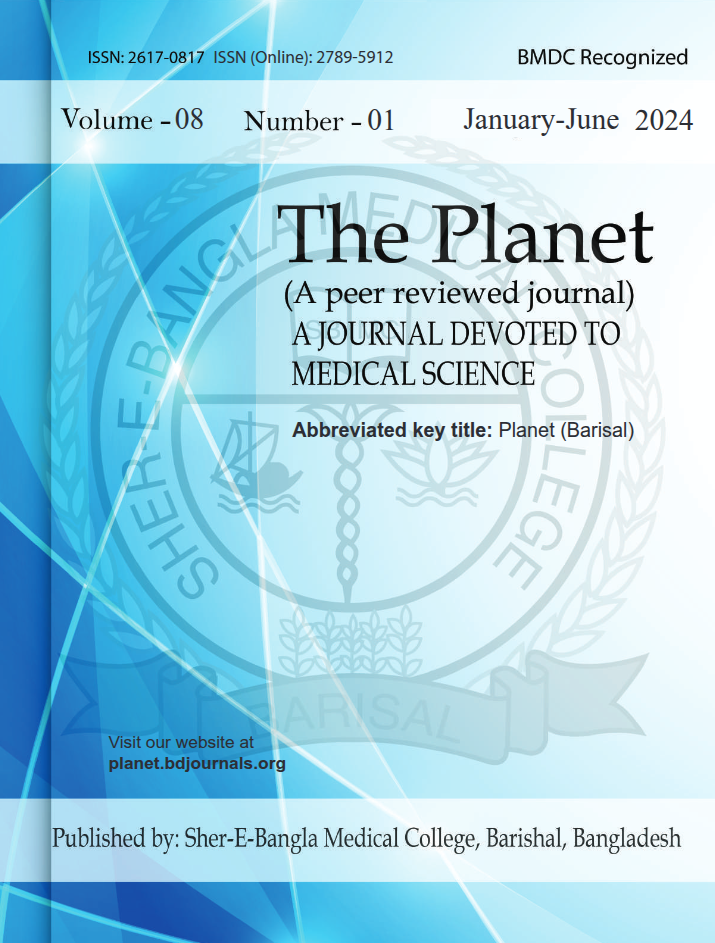Published 28-02-2024
Keywords
- Retinopathy of Prematurity,
- Plus Disease,
- AP-ROP,
- Single-Birth Neonates,
- Multiple-Birth Neonates
Copyright (c) 2024 The Planet

This work is licensed under a Creative Commons Attribution 4.0 International License.
How to Cite
Abstract
Background: Retinopathy of Prematurity (ROP) is a growing cause of childhood blindness in countries like Bangladesh due to high preterm birth rates. However, data comparing the incidence of Plus Disease and AP-ROP in single vs. multiple-birth neonates remain limited. Methods & Materials: A cross-sectional analytical study was conducted at the Department of Ophthalmology, Dhaka Medical College Hospital, from January to December 2023. A total of 82 preterm neonates (age ≥30 days, gestational age ≤35 weeks, birth weight ≤2000g) were included via consecutive sampling and divided into two groups: single-birth (n=41) and multiple-birth neonates (twins or more; n=41). Demographic data, ROP staging, zone involvement, Plus Disease, and AP-ROP presence were evaluated using indirect ophthalmoscopy and RetCam imaging. Statistical analyses were performed using SPSS version 23. Results: Zone II ROP was significantly more prevalent among multiple-birth neonates compared to single-birth neonates (65.9% vs. 31.7%, p=0.002). Conversely, Zone III ROP was significantly more common in single-birth neonates (58.5% vs. 29.3%, p=0.008). Plus Disease (48.8% vs. 39.0%, p=0.373) and AP-ROP (4.9% vs. 9.8%, p=0.396) were more frequent in multiple-birth neonates, but differences were not statistically significant. No significant demographic differences were found between groups in terms of age, gestational age, birth weight, or gender. Conclusion: Multiple-birth neonates exhibit significantly higher Zone II ROP, while singletons have higher Zone III involvement. Though Plus Disease and AP-ROP were more common among multiple-birth neonates, these findings lacked statistical significance. These results emphasize the importance of tailored ROP screening protocols based on birth plurality in Bangladesh.



